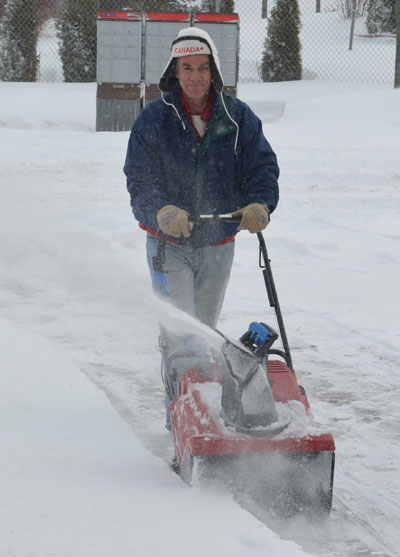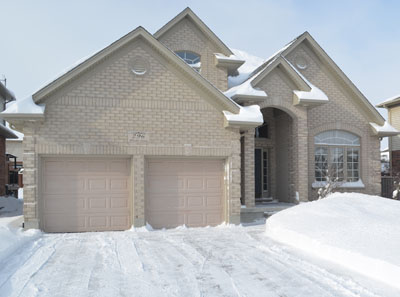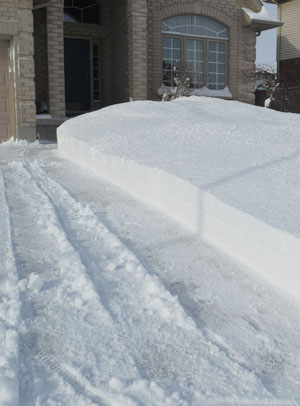It may be mildly puzzling to an outside observer, but for some of us, middle age comes as a bit of a surprise. It shouldn’t, of course – there’s no escaping the math. Yet, there seems a palpable disconnect between the picture of self, seen by the mind, and the irrefutable truth behind the calendar’s version.
At 56, rose-coloured glasses are a faithful accessory to my mind’s eye. Through this viewfinder, for example, I have a substantially thicker head of hair. And the enviable mane is of a considerably deeper hue than what the mirror mistakenly reflects. My mind’s eye sees a youthful complexion, save a few creases of experience adding a touch of character. It also sees a physique, lean, firm, and ready at a moment’s notice to leap into action with speed, strength and agility.
Like an alarm clock to a dream, the illusion can be quickly lost. A sudden sighting of a familiar, yet decidedly older figure, looking back from the reflective surfaces popular in modern shopping mall decor. Or, in the anxiously anticipated vacation photographs you’d swear had been photo-bombed by your father.
*************************
But it’s not just mirrors and photos conspiring against the warm comfort of denial. Even the line of questioning at the doctor’s office threatens a middle-aged man’s chimeral indulgence. After admittedly feeling a little smug with a stellar blood pressure result, the investigative questioning began:
“How’s your flow?”
“Pardon?”
“Your flow – do you have good, strong urinary flow?”
“Oh … Pretty good, I think … Well, not bad, I guess … I mean, I’m not sure I could autograph a snowbank, but I think I could cover my initials, with punctuation,” I offered helpfully.
This seemed to satisfy the doctor who was busily scratching indecipherable markings in my file. As I sat fidgeting – in wary anticipation of the next question – I thought about how the first one was perfectly relevant to prostate health for men of my vintage. Another glimpse into the mirror.
*************************
 With the reluctant embrace of a more age-appropriate perspective, I decided to revisit my long-standing refusal to invest in a snowblower. It seemed to me, almost an unfair advantage. Plus, I keep fairly fit – with the help of a small but well-equipped home gym – and I’ve always looked at snow clearing as another form of exercise. Until recently, that is, when I did a little research on the health hazards of snow shovelling.
With the reluctant embrace of a more age-appropriate perspective, I decided to revisit my long-standing refusal to invest in a snowblower. It seemed to me, almost an unfair advantage. Plus, I keep fairly fit – with the help of a small but well-equipped home gym – and I’ve always looked at snow clearing as another form of exercise. Until recently, that is, when I did a little research on the health hazards of snow shovelling.
According to a 2011 study in the American Journal of Emergency Medicine, there is an annual average of 11,500 injuries and medical emergencies related to snow shovelling. The study was based on the records of 100 emergency departments in snow prone States, in the 17-year period from 1990 to 2006. Approximately two-thirds of the incidents involved males and 22 percent of the total were adults 55-and-older.
At 55%, soft tissues injuries were by far the most prevalent. Not surprisingly, the lower back accounted for a full 34% of the total. Cardiac related incidents amounted to nearly 7% and all of the 1,647 deaths captured in the study. The 55-and-older segment was at greatest risk of slip and falls, sustained three times as many fractures as the younger group, and were six times more likely to be hospitalized. Among patients 55-and-older, males were twice as likely as females to experience cardiac related symptoms. A 1996 study of sedentary men found that after just two minutes of snow shovelling, heart rates and blood pressure levels exceeded the upper recommended limits.
The study goes on to report the demands of snow shovelling are further increased by extreme cold. This can increase cardiac workload and blood viscosity. Previous studies have shown freezing temperatures alone can be an event trigger for ‘at risk’ cardio patients.
All this becomes even more concerning when considering the conditions under which the snow clearing activity usually takes place: first thing in the morning; when it is usually coldest; muscles and cardio system are less than limber; and many, rushing the process so they get to work on time.
***********************

 With these statistics in mind, I jumped at the opportunity this season to add a snowblower to the domestic tool kit. While it’s a basic, light duty model, it does take some getting used to. I learned quickly, without proper care, even a small device is capable of launching streams of snow up walls of neighbouring homes, or into traffic. There are also important safety precautions to ensure an operator doesn’t become part of the next injury study. I have to confess, the snowblower has proven to make much lighter work of the task, with the spin-off benefit of artistic flair and aesthetic appeal. Deft maneuvering of the machine can produce snowbank edging with the clean-cut precision of a hot knife through a pound of butter.
With these statistics in mind, I jumped at the opportunity this season to add a snowblower to the domestic tool kit. While it’s a basic, light duty model, it does take some getting used to. I learned quickly, without proper care, even a small device is capable of launching streams of snow up walls of neighbouring homes, or into traffic. There are also important safety precautions to ensure an operator doesn’t become part of the next injury study. I have to confess, the snowblower has proven to make much lighter work of the task, with the spin-off benefit of artistic flair and aesthetic appeal. Deft maneuvering of the machine can produce snowbank edging with the clean-cut precision of a hot knife through a pound of butter.
It took some time, but on the issue of snow clearing, this middle-aged holdout has finally accepted the assistance of modern technology. The hair, however, is another matter.
*************************
Important snow shovelling tips from the Canadian Centre for Occupational Health and Safety:
1. Don’t Shovel Snow If You’re Not Physically Fit
Shovelling snow can strain your heart and back. Try to avoid the job if you aren’t in good physical shape, are older, overweight or have a history of back or heart problems. Either hand the shovel to somebody who is fit to do it or use a snow blower to clear the snow.
2. Warm Up Your Muscles before You Shovel
As with any physically demanding exercise, consult with your doctor to ensure you’re fit enough to do it. Before you begin shovelling, do warm-up stretches and flexing exercises to loosen up the muscles and prepare them for the job ahead.
3. Lighten the Load with the Right Snow Shovel
A snow shovel should be lightweight, about 1.5 kg, or a little over 3 lbs, and the blade shouldn’t be too large. Otherwise your load will be too heavy, putting too much stress on your heart and back. The handle should be long enough so that you don’t have to stoop to shovel and the grip should be made of plastic or wood because metal gets too cold. As a general guideline, the shovel (blade plus handle) should be elbow height when standing upright.
4. Bundle Up When You Shovel
Wear several layers of warm lightweight clothing that’s easy and comfortable to move in. The inner layer should be fishnet or thermal underwear that allows perspiration to escape from the skin surface. Make sure your head (especially your ears), feet and hands are well covered. Your winter boots should be warm, water-resistant and high-cut, and provide good traction. Gloves should be light and flexible and give you a good grip. If it’s really cold, wear something over your mouth. And don’t shovel at all if the temperature drops below -40°C, or below -25° to -30°C when it’s windy.
5. Pace – Don’t Race
Shovelling snow in heavy-duty clothing can be as strenuous as weightlifting. You may want to get the job over with as fast as you can, but it’s better to keep moving and work at a steady pace. A good recommended rate for continuous shoveling is usually considered to be around 15 scoops per minute. Shoveling is going to make you sweat and, if you stop, you could get a chill. The trick is to shovel efficiently without becoming fatigued.
6. Push – Don’t Lift
Push the snow rather than lifting it. If you must throw it, take only as much snow as you can easily lift. And remember, the wetter the snow, the heavier it is. Consider using a snow scoop to push the snow. The scoop helps you to move snow with less effort by riding up over the snow to allow you to move it without ever having to lift it.
7. Face – Don’t Twist
Turn your feet to the direction you’re throwing. Don’t twist at the waist. Don’t throw snow over your shoulder or to the side.
8. Rest and Recover
Take frequent breaks and drink some warm non-alcoholic fluids. In extreme conditions, such as very cold and windy weather, 15 minutes of shovelling should be followed by 15 minutes of rest.
***********************
And from the Heart and Stroke Foundation and the American Heart Association:
- Don’t shovel right after eating a meal: Your body is working hard enough just to digest the meal; adding vigorous activity on top of that could put too much strain on your heart;
- Don’t shovel after drinking alcohol: Alcohol can increase a person’s sensation of warmth and cause them to underestimate the extra strain on their body in the cold.
- Don’t step out the door and get straight to shovelling: Take a few minutes to get your circulation going and warm up your muscles. Try some light walking and stretches to increase your heart rate slowly and prepare you for the activity
- Don’t think that a snow blower eliminates your risk. Snow blowers still have to be pushed through the snow, which can be hard depending on how wet the snow is. And they can’t get everywhere so some shovelling is usually still needed.
- Take a lot of breaks along the way: It’s a good idea to wait for your heart rate to settle down every so often before starting again.
- Be prepared to take a few layers off as you go: Overheating will increase your blood pressure further so make sure you can strip down to just a sweater if needed.
- Take lots of water breaks, just as you would during any other exercise.
- If you’re feeling tired or dizzy, stop: Go inside and plan to finish the job later. If you are still feeling very unwell even several minutes after stopping, call 911.
- Be willing to ask for help from family, friends or neighbours. As well, if you know a storm is coming, recruit help long before the flakes fall.
- Find out if your community offers snow removal: Many communities will clear the sidewalks outside the homes of older or disabled adults or those with heart conditions.
*************************


Leave a Reply